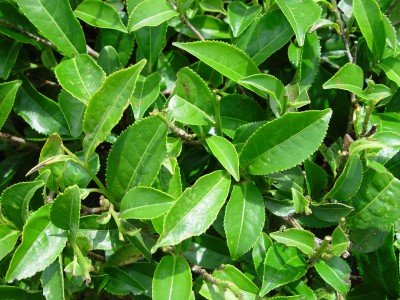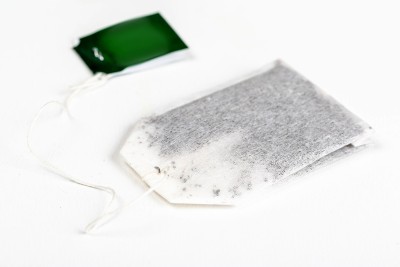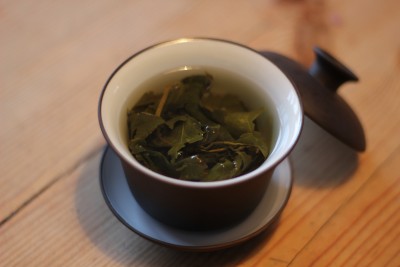Sidebar
Table of Contents
Tea
Tea (茶, cha or お茶, ocha when speaking more politely) refers to a beverage brewed from some plant in hot water. Generally it refers to such a beverage brewed with the leaves from the Camellia sinensis plant, but not always. Confusingly, tea is also used as a common name for the Camellia sinensis plant.
History
The history of tea in Yamataian Culture is ancient, but unlike Sake, is slightly more recent than the Yamataigo (邪馬台語) written language. As such, it is possible to trace the drinking of tea back to a cultural exchange 1) between Yamatai and an even older culture where the tea plant was first cultivated.
Legend 2) has it that the tea tree first grew when a religious figure cut off his own eyelids, and where they were cast to the ground the first tea plant grew. Another legend tells of an emperor of an ancient culture drinking boiled water after a few leaves blew into it and finding the taste much to his liking.
Whatever the true origins of the plant, it was soon cultivated and consumed all over ancient Yamatai. Originally in brick form (団茶, dancha), then in powdered form (抹茶, matcha), but soon thereafter other forms became popular.
Overview
The tea plant is normally cultivated on large plots of land called plantations. It thrives in tropical and subtropical climates, though it cane survive in colder climates if there is enough rainfall. Generally they prefer acidic soil, and produce higher quality leaves at higher altitudes, though they grow more slowly3).
Unless processed, tea leaves will begin to wilt, oxidize, and eventually compost due to the enzymes in the plant itself. Different categories of tea are created by selectively allowing or preventing these stages of decomposition4). The most common categories are as follows:
- Green is unwilted and unoxidized,
- White is wilted but unoxidized,
- Wulong is wilted and partially oxidized,
- Black is wilted and fully oxidized, and
- Pu'er is wilted, oxidized, and has begun composting.
Note that pu'er was historically used to refer to a style of tea from a particular place, but has since become the general term for the style of tea in which the tea leaves have been left to begin composting.
Packaging
Tea leaves are most commonly packaged in tea bags sealed inside of paper or plastic wrappers and sold in boxes with usually at least a dozen individually-wrapped bags. High-quality leaves are usually sold in the “loose leaf” style, meaning without individual bags or wrappers, but instead are scooped to order into a resealable bag from which the air can easily be expelled before sealing to preserve freshness.
Flavors
There are many varieties of traditional Yamataian teas that are commonly enjoyed.
Dancha (団茶) is a historical style of tea that is not commonly sold today, in which the tea has been pressed into a brick or cake before being dried. It is more about the style of processing than a flavor in its own right.
Ryokucha (緑茶) is Camellia sinensis leaves that have been processed to stop wilting and oxidation, commonly called “green tea” in Trade (language). Green tea is usually processed5) by first steaming or pan frying the leaves, then rolled, and finally dried. The flavor is bitter but refreshing.
Shiracha (白茶), or “white tea” in Trade (language), is wilted but unoxidated tea leaves. The flavor is generally considered more mild than green tea.
Sencha (煎茶) is a high-quality green tea that was cultivated in direct sunlight6), typically resulting in a brisk, refreshing flavor.
Bancha (番茶) literally means “ordinary tea” and is the same as sencha, but at a lower grade of quality7). After harvesting, the leaves are sorted and higher-quality leaves are classified as “sencha,” while lower-quality leaves are classified as “bancha.” Bancha usually has more bitterness than sencha.
Kabusecha (かぶせ茶) is green tea grown in partial shade8), resulting in a sweeter flavor than sencha.
Gyokuro (玉露) is green tea grown in shade9), resulting in the sweetest flavor of all green teas.
Maccha (抹茶), or matcha in Trade (language), is a high quality green tea that is milled into a fine powder10). Since the leaves are ground up and not strained out of the final beverage, this tends to be very bitter, but when whisked the bitterness is balanced out by a creamy consistency from being mixed vigorously with air.
Kōcha (紅茶) is tea that has been fully oxidated, commonly referred to as “black tea” in Trade (language), though the literal translation means “red tea,” since “black tea” is used to refer to fully fermented teas like pūārucha (see below). Kōcha has an earthier flavor than green tea.
Hōjicha (ほうじ茶) is roasted tea11). It picks up a roasted flavor from its processing.
Genmaicha (玄米茶) is green tea mixed with roasted rice12). Genmaicha has all the refreshing flavor of green tea mixed with the mild roasted flavors of the rice.
Ūroncha (ウーロン茶) is partially-oxidated tea. The name comes from the word “wulong” from the language used by the older civilization from which Yamatai first acquired tea. It has a flavor that is not quite as brisk as green tea nor as earthy as kōcha.
Pūārucha (プーアール茶) is fermented tea. As with ūroncha, the name comes from the older civilization from which Yamatai first acquired tea, the word “pu'er” to be precise. Pūārucha is almost always pressed into cakes in the same way that dancha was historically. Pūārucha has a much more earthy flavor even than kōcha, which some would describe as “mushroom-like.”
Mugicha (麦茶) is barley tea and does not typically include leaves from the Camellia sinensis plant. Mugicha has a grainy taste without the bitterness of tea leaves.
Methods of Preparation
There are almost as many ways to prepare tea as there are types of tea being actively cultivated. Usually, the common factor among all methods is the application of hot water, though methods like using cold water or even alcohol instead of water are not unheard of.
Bottled
By far the most convenient form of tea is that which was prepared and bottled for later consumption. Usually this kind of tea is prepared in industrial vats to take advantage of economies of scale, though high-quality microbrewed bottles of tea are sometimes also available at a higher price. Bottled tea is enjoyed even more frequently in colder months, particularly when served heated from a vending machine.
Tea Bags
Second only to bottled tea in terms of convenience, tea bags are porous cloth or plastic bags filled with tea to be placed in hot water and removed once the water has absorbed enough flavor to satisfy the brewer's taste. Often these bags are attached to strings to ease in the removal of the bag at the end of the brewing process. Generally, tea bags are filled with so-called “tea fannings” which are tiny broken pieces of tea leaves lower than even the lowest grade of tea leaves and not fit to be sold as whole leaves, though tea bags filled with full tea leaves are sometimes also available.
Teapot
The most common way of brewing full tea leaves involves the use of a tea pot, a device usually made of ceramic or glass that includes a reservoir in which the tea is added to hot water and left to steep. Tea pots usually have a spout from which to pour brewed tea, a lid to open for the insertion of hot water and tea leaves but closed to retain heat during brewing, and a handle for convenience.
Gaiwan
A gaiwan13) is a device usually made from ceramic or clay or glass that consists of 3 parts: a saucer base, a small bowl similar to a teacup but with a flared rim, and a lid that is primarily used to keep heat in during the brew process but also serves as a tool for manipulating the leaves, particularly pushing leaves below the waterline that were clinging to the side of the bowl.
A gaiwan is often used with several accessories as part of a ceremonial way of preparing tea called gongfu, which was developed by the older civilization from which Yamatai first acquired the knowledge of tea cultivation and preparation. Such accessories include a fairness pitcher, into which the tea is poured from a gaiwan when preparing tea for more than one person; a tray on which the tea is prepared, including a grated top allowing for waste water and tea to be poured into a reservoir below; and a tea pet14), a small clay statue of a creature said to bring good luck when hot water or tea is poured over it as part of the preparation ceremony.
Yamataian Tea Ceremony
The Yamataian tea ceremony is an ancient tradition in which matcha (抹茶), powdered green tea, is mixed with water, whisked, and served. The ceremony is actually quite casual15) and usually performed for family and close friends.
The practice of preparing powdered tea dates back to the very first introduction of tea into Yamataian culture, at which point tea was normally formed into bricks or cakes before being dried. At the time of preparation, some amount of the dried tea is broken off from the brick and ground by hand into a powder before being steeped in hot water. The Yamataian ceremony developed from this practice into a kind of minor ritual.
OOC Notes
Hyralt created this article on 2022/10/15 10:02 from the Food Template.
csinensis.jpg retrieved from https://en.wikipedia.org/wiki/Camellia_sinensis#/media/File:Csinensis.jpg and is part of the public domain.
tea_fields.jpg retrieved from https://www.flickr.com/photos/64151236@N07/26990383250 and is used under the terms of the Creative Commons BY-NC-ND 4.0 license.
tea_bag.jpg retrieved from https://foto.wuestenigel.com/tea-bag-on-white-background/ and used under the terms of Creative Commons Attribution 2.0 license.
gaiwan.jpg retrieved from https://www.flickr.com/photos/micke_nordin/6823080933/ and used under the terms of Creative Commons Attribution-Sharealike 2.0 license.
Page Tools
Terms of Service - Privacy Policy




